People often ask me for advice in choosing sewing machines for beginners to dressmaking. This article is designed specifically for those looking to make clothing at home, or starting out on the road through fashion or costume training. There are specialist machines for other jobs like quilting and upholstery but I won’t be looking at these.
I am a professional dressmaker with training in costume design as well as 20+ years experience in my own field. I make bespoke wedding dresses which means I need to sew delicate fabrics with finesse and thick support fabrics too. I have also been teaching beginners dressmaking for 5 years, with over 100 students passing through my hands to date.
My own experience of sewing machines is actually quite narrow; I have a favourite brand and model type (old Berninas) and have stuck to it very faithfully. So I asked a forum of 35,000+ sewing professionals for their opinions on machines suitable for beginners to dressmaking. More than 100 replied and I have collated their wide ranging recommendations for you here.
I will cover things to consider when choosing your machine and specific make/model recommendations as well.

Three Quick Top picks to start with:
New: Janome J3-24 New Janomes were the second most popular recommendation from my colleagues for beginners and this model was mentioned several times. It is very budget friendly and has all the features needed to get you started on your dressmaking journey. Price around £200
Second Hand: Bernina 1008 By far and away the most mentions from my colleagues went to this workhorse of a sewing machine from Bernina. This model was still produced new by Bernina very recently. New models are still available, though with the higher price tag of a coveted, discontinued item. As it is such a reliable machine you are loosing nothing by buying an older one. Only gaining pennies to spend on fabric instead! Price around £400 second hand or £800-£1600 new
Vintage: Singer 201 This workhorse of a machine looks old fashioned but is loved for good reason. A true Rolls Royce of smooth running and reliable machinery. Old ones are easy to fix and maintain with spare parts still very easy to obtain. People often give these away not realising their functional value or they can be found for Price £100-£250 on selling sites.
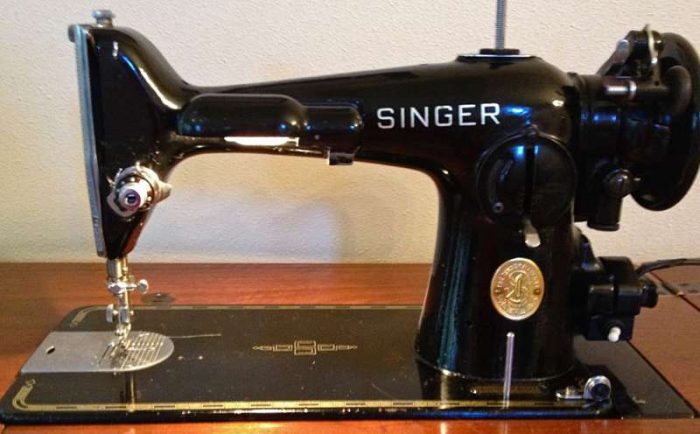
For those of you who like deep research you can check out what other engineering each manufacturer produces as a good guide to their overall expertise and quality. If they otherwise make kitchen gadgets they may not make such good machines as those who produce supercars!
Should I buy a new or second hand sewing machine?
In general older machines are better quality than new machines for the same budget. It makes much more sense to buy a super reliable, older Singer or Bernina for £250 and have it serviced (£90). Than spending the same budget on a new machine that won’t be half as good. New machines have their advantages; but if you think dressmaking is going to be a serious hobby for you, starting out with a decent, older machine is a really good idea.
Many of my students coming to classes feel more comfortable buying new machines because they come with a service warrantee. But older machines are often much simpler to fix. So even without a guarantee you’re more likely to be able to have an older machine mended where a newer one with the same fault would be busted beyond repair.
Maintenance, Servicing and Repair
You will need to look after your sewing machine. I have my own machines serviced every 12-24 months (and this with heavy usage). A standard service costs me £90 a time and maybe an extra £10-£20 if any parts need replacing. Even if you don’t use your machine regularly you’ll still need it serviced, if less often.
Learn to use the machine correctly and invest in quality disposable parts like needles and bobbins. The cheap ones won’t be saving you money when they snap inside the machine!
Keep your machine dusted, both in use and in storage. When you use a sewing machine fibres from the fabrics you sew will gradually accumulate as fluff inside the machine. You can easily brush this away with a soft paintbrush. Doing this regularly (maybe every time you open the bobbin case) will save you a lot of hassle!

It is entirely possible to learn to service and repair the older machines yourself. Like older cars they were designed to be maintained by the user and so this can save you money too. You can easily find the manuals for older machines and instruction videos for repairs online.
Try this fix before you despair…
If you think your machine has a fault try pulling all the thread out (top thread and bobbin) and rethreading the machine first. 99% of the time this will fix the issue. Tension is the next most common problem but that can also be easily adjusted to suit different fabric types following online guides.
Useful Tip: Sometimes machines left in cold places (eg attics and garages) can seize-up. They might appear to not be working when you get them out after a few years. Blowing into the machine with a hot hairdryer will often loosen up solidified oils and ease the parts back into working order. This can save you an unnecessary repair!
Prices and an ideal budget
In my experience the average budget for sewing machines for beginners is around £250-£400. There is a wide range of choice for sewing machines in this price range that are perfect for beginners to dressmaking. If you don’t have this much to spend it’s not impossible to get a good machine but your options will be more limited. With budgets under £200 you really will be best to consider a higher quality second hand machine than a new one.
Great machines under £200
Really good machines that often sell below £200 on ebay or other selling sites include: Singers 201 and 301, Bernina 1001, 1002, 1003, 1004 or 1005 or anything from the 900 series. Older Elnas, Brothers, Pfaff and Janome(New Home) are really reliable sewing machines for beginners too. Several of my colleagues also mentioned less well known brands like Frister Rossman, Husqvarna, Juki, Toyota and White.

My own trusty Bernina 1001 being used at a sewing class 
The Elna Supermatic is a great second hand buy 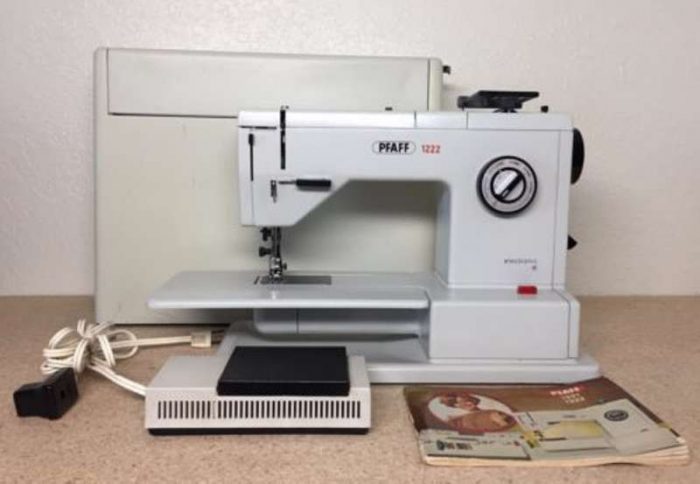
This vintage Pfaff is a workhorse loved by many sewists
Machines sold new with price tags below £150 are really just toys. Students who come to my classes with low cost machines often have to swap to one of our machines just to get on at all, because the cheap ones go wrong so often. One £30 machine someone brought in was a complete non-starter and never went at all!
Trying to sew on a low quality machine can make dressmaking as a hobby frustrating and time consuming. When trying one of my favourite Bernina 1001′ s after using a more modern or low quality machine my students often say things like is “Wow, this is like a dream, it’s so smooth. It just goes. You can feel the difference!”
Really small budget? Try this!
My own advice above not withstanding; the ‘Colour Block’ £99 sewing machines from John Lewis were mentioned more than once by my sewing colleagues as lovely little sewing machines for beginners. The John Lewis JL110 is actually made by Janome, the brand most popular for beginners buying a new machine. And several professionals said they keep this machine as a reliable back-up.
Which functions and stitches do I need?
Essential features in a sewing machine for beginners
- Check the machine you buy is a lockstitch machine; many cheaper machines are chainstitch only, this will not serve you for dressmaking.
- You will need a straight stitch of varying length and a zig-zag stitch function. Other fancier and decorative stitches are fun, but not often necessary for home dressmaking
- You will need to stitch backwards as well as forwards. If the machine has no backwards function it’s not worth considering. To be fair I have yet to come across one without a backwards stitch function.
- Most machines have what is called a ‘free arm’, which means you can sew easily around tight circles like the end of a sleeve. Sometimes access to the free arm is by pulling off a storage tray and that’s fine; but occasionally machines are produced with no free arm at all. Don’t buy one of these!
- A zip foot is essential – sewing in zips without one is very tricky indeed. Most sewing machines come with several interchangeable feet for different types of sewing. But if you’re buying a second hand sewing machine you may need to buy a zip foot separately.
- An automatic buttonhole function is exceptionally useful on a sewing machine for beginners. You are more likely to find the automatic buttonhole function on newer machines, but many older ones have it too. Some older machines have a semi-automatic button hole function which has a lot of scope for manipulation.
Top Tip: Make sure any extra parts you buy are specifically designed to fit to your machine. When my students have come in with a £3 ‘one size fits all’ machine-foot instead of the proper one for £25, it has invariably been a disaster!

Bonus Features – nice to have but not essential
- Speed adjustment: some machines come with a switch to ‘slow’ which can be really helpful for beginners.
- Pressure responsive foot pedal: Older machines usually have analogue foot pedals, so you press harder to go faster and you can go very slowly indeed with not much pressure. But many cheaper and newer machines have only one speed available when you press the foot-pedal. In this case the speed switch mentioned in the previous point is extra helpful.
- A stretch stitch function: can be useful if you want to sew stretch fabrics occasionally. However if sewing stretch fabrics is your main aim an overlocker machine (called a serger in the US) would be a better bet. The stretch stitch on domestic sewing machines is limited in scope.
- A flat bed attachment: is available with some machines. Occasionally it is the standard set-up and has to be removed to use the free arm. This is a nice extra but by no means essential to home dressmaking. Some sewists use their flat bed all the time but I have never used mine, so it is just personal preference.
- Bobbin empty warning. It’s frustrating when your bobbin becomes empty without you realising, so the warning can be helpful. But without the warning most people get skilled at being able to hear the change in machine sound when the bobbin is about to run out.
Things that don’t matter:
- Front loader or top loader: Sewing machines might be one or the other. The names refer to the position in which the bobbin is inserted into the machine. It doesn’t affect performance at all so use other factors to decide which machine to buy.
- Bells and whistles: unless you’re planning to do lots of decorative embroidery, stitch functions beyond a straight and zig-zag aren’t needed for home dressmaking. Don’t pay extra for a machine with bells and whistles you won’t use!
Mechanical or Computerised?
Either is fine. Mechanical doesn’t mean powered by a hand-wheel, they are still plugged into an electric socket! For home dressmaking you don’t really need any computerised elements as they are usually just fancy stitches. In fact the less complicated, mechanical machines are often more reliable and easier to repair. But some people like the idea they can ‘tell’ the computerised machines what they are sewing and it picks the ideal stitch type and tension automatically.
Even the oldest handwheel type machines can be easily converted to electrical power. You can find guides to this online. But the computerised machines appeal to many beginners as they simplify the stitch options available.
Analogue Or Digital Sewing machines
With sewing machines you might have analogue knobs and dials for choosing infinite combinations of stitch length and width. Or more limited digital options with a just two or three length/width options. Older machines are almost always analogue while computerised and lower cost machines are usually digital.
The digital machines usually have enough options for a beginner and they often have many more fancy stitches. So if decoration is your main aim then these are really useful. But it might be frustrating when you become more advanced in your dressmaking ambitions to find that the scope for variation in the basic stitches is limited.
Weight and Strength?
Older machines were made with metal bodies and are often very heavy. The older, heavy ones usually have more ‘oomph’ and will sew through thicker fabrics or layers smoothly, where the light-weight machines will struggle. But if you’re going to be travelling to sewing classes with your machine it might be best to buy a newer, lighter sewing machine with a plastic body.
Don’t buy an industrial machine they are not suitable as sewing machines for beginners. They are the strongest, toughest machines and often favoured by professionals but they only do straight stitch (no zig-zag) and go very, very fast. Plus they are normally fixed into a dedicated table which makes them awkward to move around or fit into a domestic setting.
What is an overlocker? Do I need one as a beginner to dressmaking?
Only maybe, probably not! Overlockers (called sergers in the US) are an entirely separate type of machine for different, specific sewing tasks. They are really useful if you plan to sew lots of stretch fabrics. The main other use is for finishing the raw edges of your fabric pieces to prevent fraying. But you can do this very effectively on a domestic sewing machine using the zig-zag stitch. In fact a standard overlocker is simply a fancy ‘zig-zag and straight stitch both at once’ machine.
Overlockers come in much the same range of prices and qualities as sewing machines. So if you do decide you want both you can split your original budget to spend half on each; or spend more for better machines.
In my 20 years of professional sewing I have used my overlocker less than 10 times, but my colleague Sarah of Shore and Pine, who makes ready to wear garments, uses hers all the time!
Join online forums for more help and advice on sewing machines for beginners and in sewing life!
I surveyed a forum of 35,000+ sewing hobbyists and professionals for their opinions on great sewing machines for beginners. I hope my collation of their recommendations and advice has been helpful. To join this forum head over to facebook and look for the ‘costume networking group‘. Though it is primarily for those working in the costume industry (film, theatre, larp etc) they are a welcoming bunch and love all aspects of fashion and construction. There are many other groups and forums too for people with other sewing interests.
More Makes and Models Specifically recommended by my colleagues:
- Bernina 830, 930 (and all the 900 series) 1001, 1005 and 1008 (and all the 1000 series) and the Bernina Record. Everyone said they preferred the older, metal cased machine and one person disliked Berninas.
- Janome J3-24, J3-18, DK-30, the John Lewis Colour Block and Cxl301
- Singer Vintage models 15, 99, 201 and 301. Sewists in the forum think new Singers aren’t as good and suggest even to actively avoid them. But the K-23, K-29 and Promise machines were loved by one sewist each.
- Brother The strong consensus was to avoid new Brother machines; ‘heap of junk‘ was one quote. But older machines were coveted and highly recommended. My colleagues mentioned one new model positively, the CS6000i.
- Pfaff was loved by many, particularly older machines with models 6122 tipmatic and 1222e mentioned by name.
- Elna Contessa, Lotus and 3005 models were all suggested as great sewing machines for beginners. New Elnas were only mentioned once.
- Husqvarna vintage machines got rave reviews but new ones were often mentioned as disappointing and to be avoided. Sewists recommended the Opal, Sapphire and Emeral models.
- Frister Rossman vintage machines are great for beginners are will last a long time.
- Other makes with single recommendations each included Juki, Shark, Toyota, White and Kenmore

Why am I so biased to older machines?
Though there is a heavy bias in favour of the older machines with my colleagues, many beginners shy away from them. Don’t be afraid to ask around to see if grandma or aunty has an older machine stashed under the stairs, dusty from lack of use and a treasure to be found! Having an older machine refurbished may be a better long term investment in your sewing future than a less tested new model.
And older, reliable machines hold their value for resale. If the dressmaking hobby doesn’t take off you can probably sell your vintage Singer for the same as you paid. But a £200 new machine will be worth very little indeed second hand!
Many brands have been bought out by other manufacturers over the years and are no longer developed separately. They just use the well established brand names to add kudos to their products. For example Singer and Husqvana are now both made by one company, neither popular with my colleagues as new machines. On the other hand well recommended Janome make cheap and cheerful own-brand machines for big names like John Lewis so the low cost doesn’t always mean low quality. Bernina models 1005 and earlier were manufactured in Europe with exceptionally high quality engineering. The newer machines are still designed in Switzerland but have been outsourced to the far east for production and are less well regarded by professionals.
I’m happy to help!
My direct experience with sewing machines is fairly limited (I love my Bernina 1001’s with a passion) but I’m happy to share my thoughts or answer questions. Feel free to comment or to add your own advice and experience that might be useful to more readers.
To see more of my day to day work head explore my website portfolio or head over to my teaching website, Reigate School of Sewing.









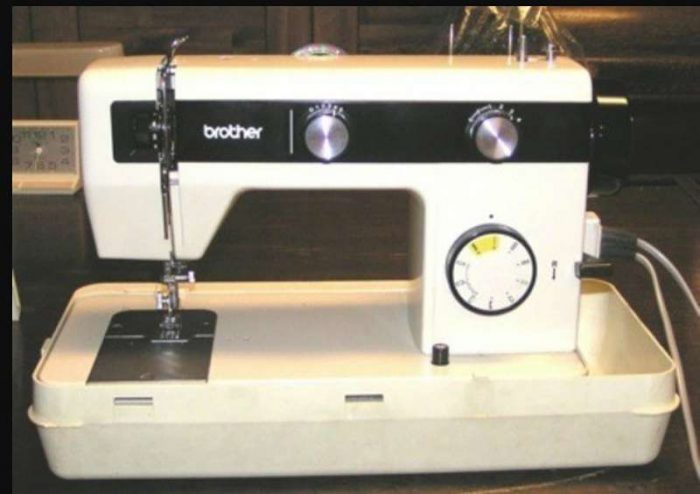



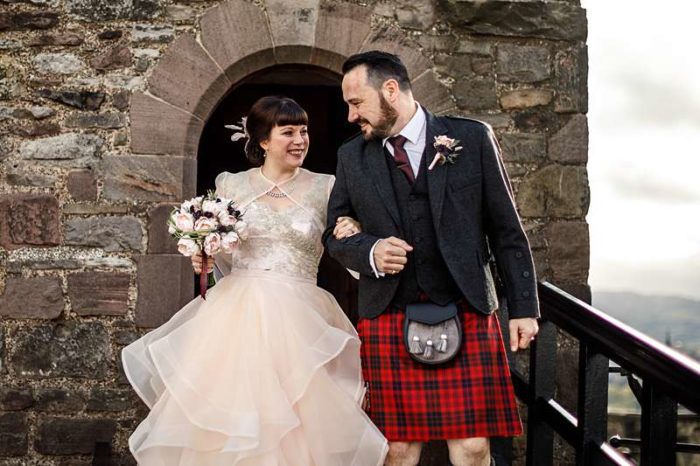
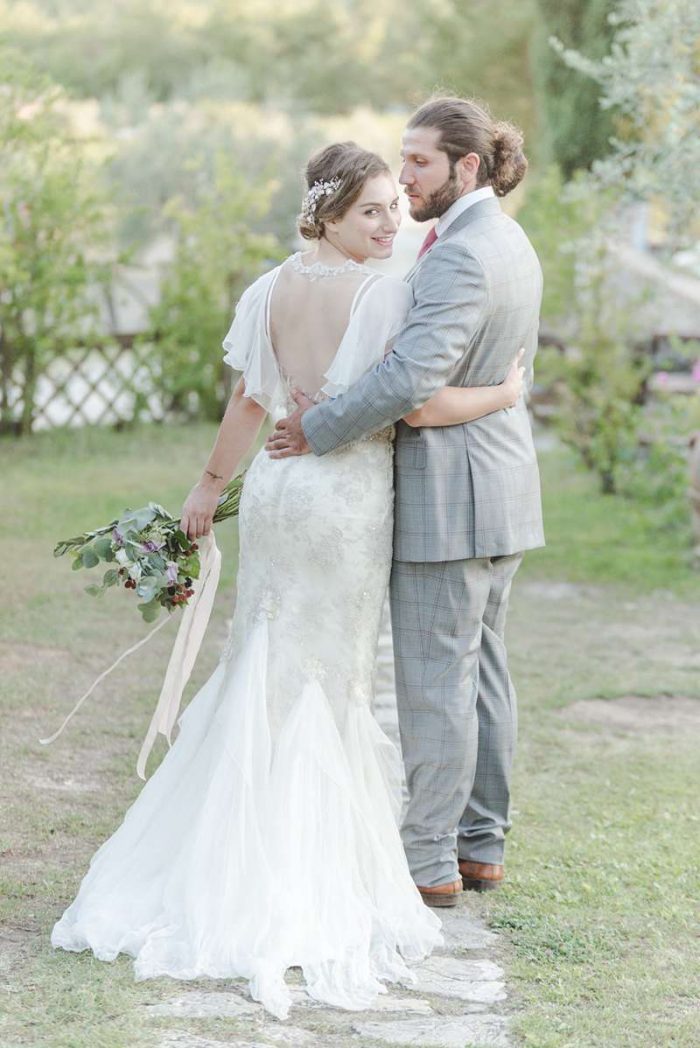



Emily BThanks so much for this detailed investigation This question is asked so often (almost daily) in sewing forums, and I know I’ll be sending people over here to read this. It’s interesting to see that new Berninas didn’t pop up as ‘recommended for those new to dressmaking’; I’ll hypothesise that this is due to their (higher) price point, even for their current entry-level model (the 215). Fundamentally, they’re not unsuitable for beginners; they’re just a bigger investment to begin with.
Meanwhile, I’m thrilled to see some of my favourite machines on this list. Singer 201s (the older cast iron, and newer aluminium body machines) and the smaller 99s are straight-stitch only machines, but the narrower feed-dogs mean they are some of the most beautiful straight stitches you’ll ever see. I picked up my Elna Supermatic from the tip shop for AUD$15, and after a service it runs beautifully. My students love to sew on my Bernina 1001, too!
To anyone reading this and looking for answers: please take notice. This advice is sound, and has your best interests at heart.
Viv WatkinsI like your advice for using a hair dryer on a machine that has been stored for a long time or in a cold place. Years ago, my engineer told me I must always have my machine at room temperature before sewing and I do that without even thinking about it!
RitaPlease is keyser 69 and pffaf 1212 okay for beginners class? Thanks
woozelsmudgeHi Rita
As I say in the article I actually have very little personal experience with any machines except my beloved Bernina 1001. The Elna supermatic was recommended by several people I surveyed as a very nice little machine. Pfaff also scores highly among sewing professionals as a good brand and looking around there seem to be lots of tutorials and demos using it, I would say yes it will do you very well.Googling Keyser 69 didn’t help me know more either as nothing comes up – except an article with the Smithsonian museum. So from that I infer it’s very much an older machine! And, as long as they are good working order, older machines are usually pretty good. If it does a straight and a zigzag stitch and has a backwards function I should imagine you are good to go! I hope this gives you some confidence – all machines will benefit from a service before use!